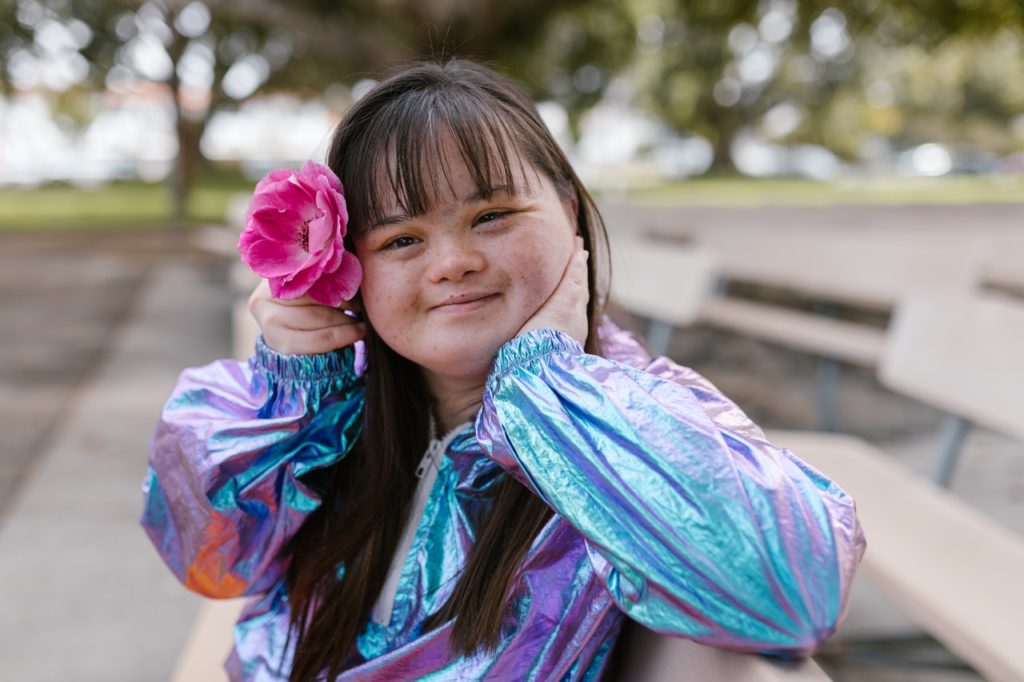Table of Contents
How can teachers help students with autism learn to speak up and communicate more clearly in class? Students with autism spectrum disorders often struggle with social issues and communication more when compared with typically developing children. While most children with a diagnosis on the autism spectrum simply communicate a little differently from their peers, some children with autism are largely nonverbal and will speak at most a word or two or sometimes even not use words at all.
This can make communication difficult, even for parents who know their child well. Some professionals have suggested that rather than trying to force a child to communicate in a verbal way that is difficult or uncomfortable for them, they should just be taught to use sign language or other nonverbal communication methods.
While this may initially make sense as the student is more comfortably able to communicate their needs with their caregivers, there are several long term consequences that need to be considered before investing so much time and effort teaching a child a whole new language.
Many would quickly recognize the limitations of teaching a child a language with only a limited number of speakers, but many still suggest teaching autistic children to use sign language instead of speaking. While this may initially facilitate basic communication of needs early on in a child’s life, not being able to speak at all is a serious hindrance that will limit the opportunities that the child will be able to access in the future.
That doesn’t mean that sign language has no place in helping students with autism, but simply not bothering with verbal communication because it is difficult for the student will end up doing them a disservice in the long run. Students with disabilities may struggle more than their typically developing peers, but that doesn’t mean that they are incapable of improving.
It can seem hopeless to get a child with nonverbal autism to speak like other children, but not everyone needs to be able to eloquently string together long and wordy sentences. However, even being able to use single words or short phrases can greatly simplify a person’s life and help them to find their way in life more easily.
So how can teachers help teach students with autism how to speak? This guide will go into several research based strategies for how teachers can help students with autism to learn to speak. While it will not be easy, interventions can make a huge difference in how successfully a student with autism is able to navigate life.
Research Based Strategies for Teaching Students with Autism to Speak
1: Suggest the parents consult with a Speech-Language Therapist
The first thing to realize is that this is not going to be a one person battle. Interventions to teach students with autism how to speak are often very time intensive, requiring a large amount of one on one time with the student running through repetitive prompts and drills. Teachers have rooms full of other students and can’t usually sit for long periods of time with one student. Teachers alone will simply not have the time to spend individually with the student to help them develop their speech abilities.
Because of this, the first thing that a teacher should do to help students with autism learn to speak is to form a team of adults who can work collaboratively to utilize strategies. The first people to get on board is the parents. If a teacher sees a student who is struggling to communicate in class to the point that it is affecting their learning, whether that student has a diagnosis of autism or not, the teacher can suggest that the parents schedule a meeting with a speech language therapist or speech language pathologist.
Initially, the parent will have to act as a go-between for the teacher and the speech language therapist, but eventually it would be best to suggest a video meeting with the teacher, parents, and speech language therapist all involved. This is best done after the initial few sessions are completed and the speech language therapist has gotten to know the student and their individual needs a bit better. Then the newly formed team can work together to design practical interventions and delegate out how these interventions will work in the various contexts each adult sees the child.
2: Sign language can be beneficial when combined with speech.
Sign language is a controversial approach when working with students with communication disabilities. It can seem foolish to try to add an entirely new language to a struggling child’s plate, but research shows that when linked together with appropriate verbal interventions, some amount of sign language can actually have a beneficial effect on a child’s ability to communicate.
While some parents and teachers may fear that learning multiple languages simultaneously will limit the development of both languages, research shows that this isn’t the case and bilingual learners of languages do not have limited language abilities even when they have an autism spectrum disorder. (Dai et al.) People all over the world grow up learning multiple languages, and neither sign language nor people with autism are different in this aspect.
One of the ways sign language is used to help students with autism learn to speak is through a method called Simultaneous Communication Training. Simultaneous communication training involves the caregiver using a sign or gesture along with a verbal word to link the two styles of communication.
Research out of the Center for Early Literacy Learning showed in a metastudy that this approach generally led to better communication outcomes for students with autism. According to the researchers, “results showed, regardless of type of sign language, that simultaneous communication facilitated the children’s production of speech and oral language.” (Dunst et al.)

However, an earlier study also found that “The data suggest that following simultaneous communication training, mute children are not likely to learn to talk; however, a combination of simultaneous communication training and separate vocal training may have a synergetic effect on speech development.” (Carr)
This suggests that while simultaneous communication training may be helpful in developing simple communication, it often may not lead to traditional spoken communication without additional separate and explicit verbal training.
Most teachers will not have the time to learn full on sign language with their students, but they can still utilize a few of the basic signs or gestures that the parents or speech language therapist have implemented. The signs that the teacher chooses to learn should be just a few classroom basics like the ones used to ask to go to the bathroom, request help from the teacher, or show that they have finished their work.
As the research above showed, these signs do not need to be official sign language, but simply a physical gesture connected to a specific meaning. This connection between the types of communication will help the nonverbal student to connect speech with communication and help their brains to learn to process the speech more as a form of communication.
When making a nonverbal gesture or sign with a student, the teacher should always use the verbal word simultaneously. This will help to connect the two types of communication for the child and help them get used to words being used to communicate along with the nonverbal methods they are more comfortable using.
Helping them to become more accustomed to verbal communication will facilitate the interventions the speech language therapist is attempting as well as allowing a way for the student to communicate their needs to the teacher in class.
3: Roleplay social situations with them
A study out of Claremont McKenna College found that another key way to help students with autism to learn better communication is through the use of scripted role play scenarios. The researchers had boys from ages 8-10 use “cue cards” during a scripted conversation in order to help the students with autism to learn to speak through giving them a model. Students’ lines were printed on the cards which gave them good responses to the question that was asked to them along with an appropriate follow up question.
The study resulted in the students meeting the criteria of successfully completing the activity, but also led to increased social skills in other contexts as well. According to the researchers, “Responding generalized to untrained topics, and across conversants and settings.” (Grosberg and Charlop) This is encouraging as it shows that rigid roleplays don’t just teach students something that works in a single controlled setting with a certain adult individual, but also give them the tools to understand how to respond better in other natural social situations as well.
Teachers can use this knowledge to follow up inappropriate behavior and model for the student some better alternatives to choose from next time. For example, if a student is greeted by someone visiting the classroom, but simply walks away instead of returning the greeting, the teacher can write up a simple greeting roleplay and give the student a couple of appropriate ways they might respond to someone saying hi to them. The teacher should always give multiple options and allow the student to pick one that feels comfortable for them.
This research isn’t only helpful for students who rarely speak, but can also be used to help model appropriate social behavior for any student with or without an autism spectrum disorder. Some students on the autism spectrum are quite verbal, but simply say inappropriate things, not understanding the social implications of their words.
This research can also be very helpful for them to consider their responses in a guided discussion and roleplay with the teacher. Honestly, many students with and without a diagnosis of autism say inappropriate things and could learn from a bit of roleplay. Especially for younger children, including roleplay activities as part of class can help to teach social skills, encourage being polite and remind students of class rules.
4: Let them play games that teach social interactions.
Teachers won’t always have the time to design well crafted roleplay activities every time a student struggles in a social situation, but more interesting data shows that it doesn’t take a human conversation partner to help students with autism to learn to speak better.
A study on Chinese preschoolers with autism spectrum disorders found that showing the children a roleplay performed by robot characters followed by an interactive session where the children practiced what they had seen led to improved communication for the children. The study reports that “Narrative abilities and gestural communication for these children were enhanced” suggesting that these digital roleplays could be a good foundation to help in Simultaneous Communication Training.
Another interesting study found that Israeli students with autism spectrum disorders could learn better to cross the street after playing a game that simulated safe crossing training in a virtual reality game. (Ben-Chaim et al.) Not only did the students learn to cross the street more safely in the game but this learning transferred to safer street crossing practices in real life. These studies show encouraging data which suggest that games can be a great independent way for students to practice skills.
Many teachers already provide students with a tablet or computer with access to educational games. Games which include social education and role plays such as those suggested in this post are great things for teachers to help students with autism learn to speak even when they spend time working with other students.
5: Give lots of group activities for them to test out their social skills.

Research into the efficacy of various interventions found that no single intervention or strategy would be fully effective without chances to practice communication in a natural setting without adult guidance. Despite communication interventions having a positive impact on social skills in other contexts, “many children with autism will need to have these methods supplemented with less adult-directed activities to increase communicative initiation and carry over learned skills to new settings and communication partners.” (Paul)
This is logical however, as no skill practiced in isolation perfectly prepares a person to perform it in other contexts. For example, while studying flashcards has a positive effect on improving a person’s foreign language ability, there is very little chance that this simple practice will lead to fluency. Students, regardless of what skill they are learning need to do simple practice exercises in addition to taking on bigger and more natural challenges.
Teachers should continue to give students many opportunities to practice their social skills through turn and talks, group discussions, and group projects. Some teachers may consider letting students who struggle with social interactions show their learning in another individualized way, but this research suggests that doing so will limit their ability to develop social skills.
Just because something is a bit uncomfortable doesn’t mean it should be avoided. Teachers regularly push students out of their comfort zone and challenge them to do things they would not do on their own. Students with autism, even those who are nonverbal should be no different. Teachers should always seek to give every student appropriate challenges to boost their strengths and shore up their weaknesses so that they can go into their futures equipped with knowledge and practical skills.
Conclusion
Teaching a student with a nonverbal autism spectrum disorder is slow and simply can’t be undertaken by a single teacher alone, however, teachers can help students with autism learn to speak by advocating for their needs, giving them some basic nonverbal communication for basic needs and then giving them lots of time to practice working in a social environment. The students will improve slowly and one year might not be enough time to fully see the fruits of one’s labor, but research shows that these interventions work.
As long as teachers continue to teach with care and give consistent feedback and encouragement with Simultaneous Communication Training, students with nonverbal autism will leave class more capable than they came. Even if it is just a single word better than before, being able to communicate at all in a manner that works for everyone will open so many doors for these students. They don’t need to be talkative and outgoing social butterflies, but just having a way to advocate for their needs and communicate with others will make a world of difference for their futures.
Want more like this? Make Lab to Class a part of your weekly professional development schedule by subscribing to updates below.
References
Ben-Chaim, Hadass Milika, et al. “Virtual Reality for Teaching Street Crossing Skills to Children with Autism.” PsycEXTRA Dataset, 2006, https://doi.org/10.1037/e695432011-031.
Carr, Edward G. “Teaching Autistic Children to Use Sign Language: Some Research Issues.” Journal of Autism and Developmental Disorders, vol. 9, no. 4, 1979, pp. 345–359., https://doi.org/10.1007/bf01531444.
Dai, Yael G., et al. “Language Abilities in Monolingual- and Bilingual- Exposed Children with Autism or Other Developmental Disorders.” Research in Autism Spectrum Disorders, vol. 55, 2018, pp. 38–49., https://doi.org/10.1016/j.rasd.2018.08.001.
Dunst, Carl J, et al. “Influences of Sign and Oral Language Interventions on the Speech and Oral Language Production of Young Children with Disabilities.” Cell Reviews, vol. 4, no. 4, 2011.
Grosberg, Denise, and Marjorie H. Charlop. “Teaching Conversational Speech to Children with Autism Spectrum Disorder Using Text-Message Prompting.” Journal of Applied Behavior Analysis, vol. 50, no. 4, 2017, pp. 789–804., https://doi.org/10.1002/jaba.403.
Paul, Rhea. “Interventions to Improve Communication in Autism.” Child and Adolescent Psychiatric Clinics of North America, vol. 17, no. 4, 2008, pp. 835–856., https://doi.org/10.1016/j.chc.2008.06.011.




